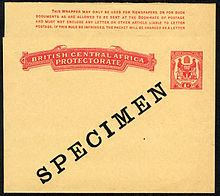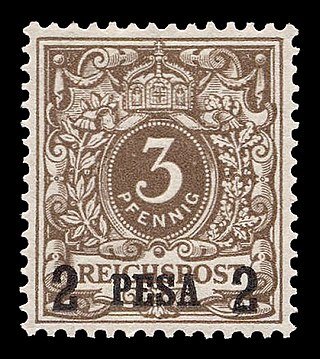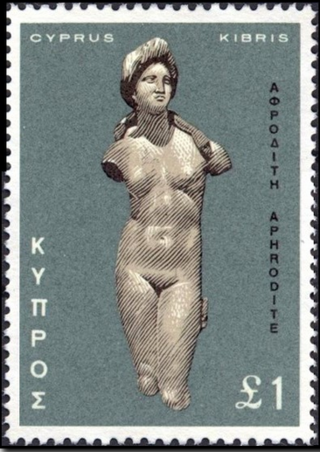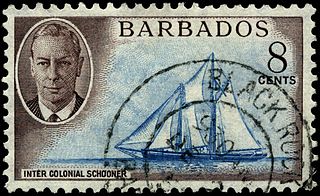



The British Central Africa Protectorate existed in the area of present-day Malawi between 1891 and 1907.




The British Central Africa Protectorate existed in the area of present-day Malawi between 1891 and 1907.
The first postage stamps of the protectorate were issued in April 1891, produced by overprinting the Rhodesian stamps of the British South Africa Company with B.C.A.. A number of new post offices opened during the year, including Blantyre, Zomba, Chiromo, Port Herald, Fort Mlange, Fort Johnston at the southern end of the lake, and Karonga at the northern end of the lake. Chiromo was the main sorting office until after the Shire Highlands Railway was opened in 1908, when Limbe became the postal hub. [1]
Surcharged BSAC stamps were necessary in 1892, 1893, and 1895. 1895 also saw the introduction of stamps printed for the protectorate, featuring the protectorate's coat of arms and inscribed BRITISH CENTRAL AFRICA. The 1895 issue was printed by De La Rue on unwatermarked paper, but from February 1896 on the paper had either the Crown over CC or Crown over CA watermarks.
In August 1897 a new design was introduced, still using the coat of arms, but with a clear instead of a lined background.
In 1898 the supply of one-penny stamps ran out. Initially the 3-shilling postage stamp was surcharged, but on 11 March the government began to use embossed revenue stamps overprinted with INTERNAL / POSTAGE.
In 1901, the 1d, 4d, and 6d values of the 1897 stamps were printed in different colours. In 1903 a new series of stamps was issued, featuring the profile of King Edward VII and inscribed BRITISH CENTRAL AFRICA / PROTECTORATE, with denominations from one penny to ten pounds.
From 1908 stamps were issued by the Nyasaland Protectorate, and from 1964 Malawi. [2]
The first items of postal stationery, for the British Central Africa Protectorate, were registration envelopes in 1892. Between 1892 and 1895 a total of 14 different registration envelopes have been identified as having been produced by overprinting British South Africa Company registration envelopes with BRITISH CENTRAL AFRICA ADMINISTRATION. During 1895 and 1896 three registration envelopes were designed and printed for the protectorate. [3] [4]
In 1893 two different postcards were issued using British South Africa Company postcards overprinted BRITISH CENTRAL AFRICA in an ornamental frame. New postcards designed for the protectorate were issued in 1896 (3 postcards), 1898 (2 postcards) and 1904 (2 postcards). [3] [4]
One newspaper wrapper was made available for use in 1899. [3] [4]
When the protectorate's name was changed to Nyasaland Protectorate all items of postal stationery continued to be valid.

An overprint is an additional layer of text or graphics added to the face of a postage or revenue stamp, postal stationery, banknote or ticket after it has been printed. Post offices most often use overprints for internal administrative purposes such as accounting but they are also employed in public mail. Well-recognized varieties include commemorative overprints which are produced for their public appeal and command significant interest in the field of philately.
East Africa and Uganda Protectorates was the name used by the combined postal service of the British protectorates, British East Africa and Uganda, between 1 April 1903 and 22 July 1920.

The native states of India, also known as feudatory or princely states, were typically vassals under a local or regional ruler who owed allegiance to the British Raj. There were about 675 native states in all but many were not parts of British India proper because they never become possessions of the British Crown; rather, they were tied to it in a system of subsidiary alliances. Following the Partition of India in 1947, the suzerainty of the Raj was terminated and native states had to choose between independence or formal accession by either India or Pakistan. In practice, all of the native states had acceded or been annexed by the end of 1949.

This is a survey of the postage stamps and postal history of German East Africa.
This is a survey of the postage stamps and postal history of British East Africa.

This is a survey of the postage stamps and postal history of Cuba.

The postal history of Malta began in the early modern period, when pre-adhesive mail was delivered to foreign destinations by privately owned ships for a fee. The earliest known letter from Malta, sent during the rule of the Order of St John, is dated 1532. The first formal postal service on the islands was established by the Order in 1708, with the post office being located at the Casa del Commun Tesoro in Valletta. The first postal markings on mail appeared later on in the 18th century.

This is a survey of the postage stamps and postal history of Montenegro.

This is a survey of the postage stamps and postal history of Cyprus. The country's postal history is intricately linked to the island's political past.

In philately, an imprinted stamp is a stamp printed onto a piece of postal stationery such as a stamped envelope, postal card, letter sheet, letter card, aerogram or wrapper. The printing may be flat upon the surface of the paper, or embossed with a raised relief. An imprinted stamp is also known as unadhesive stamp or indicium.

This is a survey of the postage stamps and postal history of Gibraltar.

This is a survey of the postage stamps and postal history of Barbados.

This is a survey of the postage stamps and early postal history of Sudan. Sudan was governed by the United Kingdom and Egypt from 1898. Independence was proclaimed on 1 January, 1956, and independent Sudan became a member of the Universal Postal Union (UPU) on 27 July 1956.
This is a survey of the postage stamps and postal history of British Bechuanaland.

This is a survey of the postage stamps and postal history of Malawi.

This is a survey of the postage stamps and postal history of Zimbabwe.

The Crown Agents Philatelic and Security Printing Archive was deposited with the British Museum from the 1960s, though the first recorded deposit from the Crown Agents was in 1900. The archive consists of a range of philatelic and written material which were the Crown Agents' working records. It is the most comprehensive record of British Colonial and Commonwealth stamp issues of the last 100 years.
The Foreign and Commonwealth Office Collection was formed by instruction from the Secretary of State for the Colonies on 23 April 1890 to all territories under his authority. The intention was to have a record of all Colonial Postage and revenue stamps, postcards, embossed envelopes and newspaper wrappers. The collection contains single examples of the stamps in use at that time as well as some obsolete issues and single copies, usually from first printings, from 1890. Variations such as colour varieties and alternate watermarked papers are included.

Kenya, formerly known as British East Africa issued revenue stamps since 1891. There were numerous types of revenue stamps for a variety of taxes and fees. Also valid for fiscal use in Kenya were postage stamps issued by the following entities:

Nyasaland, now known as Malawi, first issued revenue stamps as British Central Africa in 1891 and continued to do so until the late 1980s.